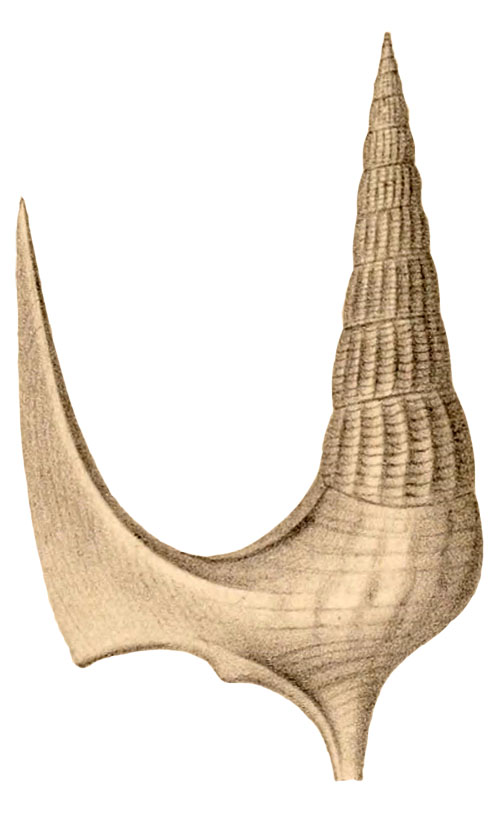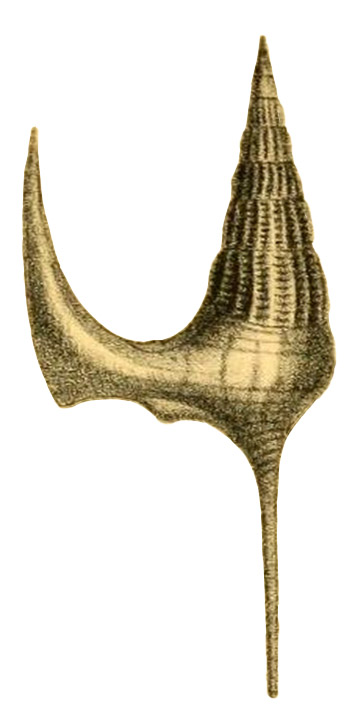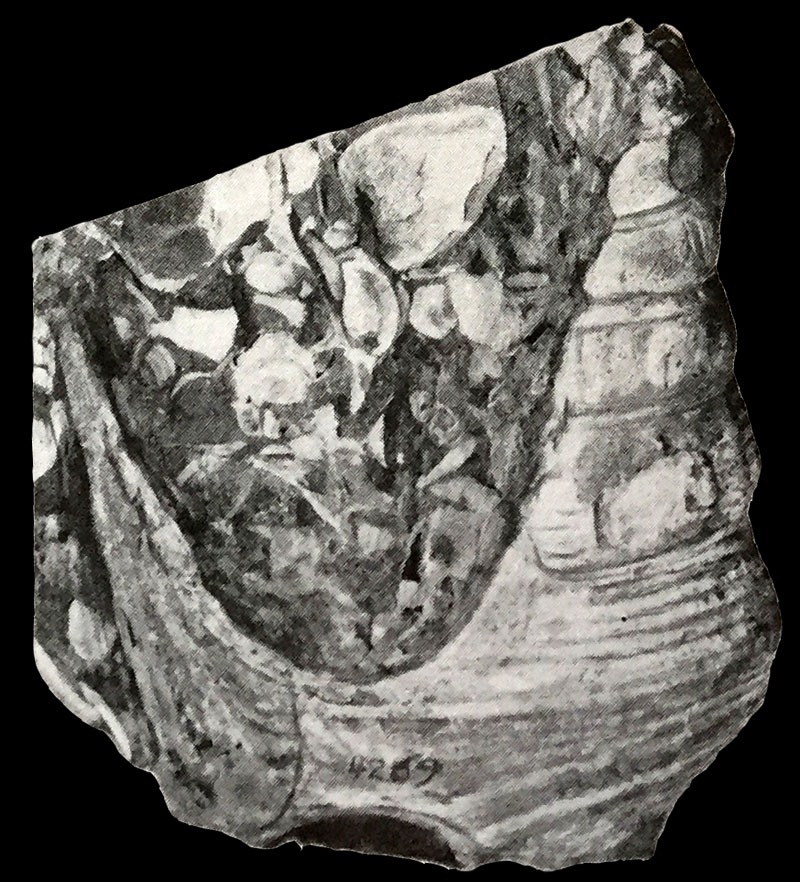Stromboidea
Original Description of Aporrhais falciformis by Gabb, 1864, p. 127:
- "Shell elongated, slender; spire very high; whorls usually eleven, sometimes twelve; suture distinct; surface ornamented by about fourteen rounded, longitudinal ribs, slightly curved and narrower than the interspaces; these are crossed by from seven to nine rather large revolving ribs on the upper whorls. Body volution somewhat uniangular near the lip; the ribs dwindle to mere broad, oblique tubercles, and the revolving lines extend down to the canal. Mouth biangular above, rapidly narrowing to the canal, which, from casts, appears to form nearly a third of the total length of the shell. Lip long, falcate, sometimes almost as high as the spire, usually ending about two-thirds of an inch below the apex; inner margin diverging at a small angle from the spire; outer margin nearly perpendicular and very slightly convex, ending in an angle; lower margin concave, with a small tubercle at its inner end. The shape of this side of the lip is variable; sometimes the angle is replaced by a broadly rounded process. The inner face of this lip is angularly concave; back carinate. Columella incrusted by a large callus, forming a tubercular projection immediately on the oblique lower surface of the body whorl."
Locus typicus: Tuscan Springs, Tehama County, California, USA
Stratum typicum: early Campanian, upper Cretaceous
Holotype: UCMP 14990
Aporrhais falciformis Gabb, 1864, pl. XX, fig. 83
History and Synonymy
1868
Anchura falciformis in Gabb, 1868, pl. 14, fig. 14
1927
Stewart, 1927:360: "The specimen figured corresponds fairly well with the size of the original figure, which is probably a synthetograph, and is taken for th lectotype."
Anchura falciformis in Stewart, 1927, pl. 32, fig. 9
1930
Stewart, 1930, p.8:
- "The holotype of "Dosinia" inflata and the Academy's specimens of Flaventis? lens from Chico Creek are in a fine, dark gray, limy sandstone full of shell fragments. The matrix of the lectotype of Anchura falciformis is also very similar to this sandstone and is better called a fine sandstone than a shale. The probability that the lectotype of Anchura falciformis was from Chico Creek is increased and now prctically amounts to certainty. The specimens are labelled Chico Creek and Tuscan Springs but none of Gabb's species from Tuscan Springshave this type of preservation, while on the other hand, it is possible to identify two of Gabb's specimens of A. falciformis, with the lectotype, as being from Tuscan Springs. Both specimens are comparable to A. falciformis but neither is sufficiently well preserved to permit unqualified identification."
Internet
References:



